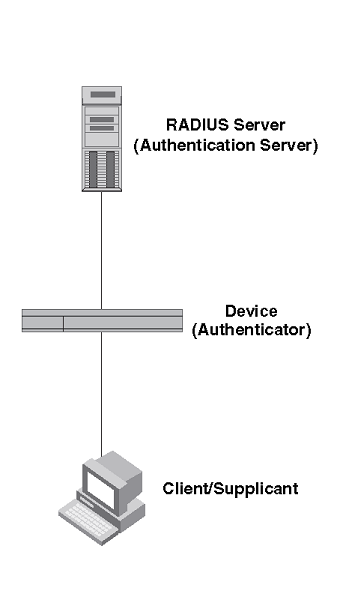Device roles in an 802.1X configuration
The 802.1X standard defines the roles of client/supplicant, authenticator, and authentication server in a network.
The client (known as a supplicant in the 802.1X standard) provides username and password information to the authenticator. The authenticator sends this information to the authentication server. Based on the client's information, the authentication server determines whether the client can use services provided by the authenticator. The authentication server passes this information to the authenticator, which then provides services to the client, based on the authentication result.
The following figure illustrates these roles.

Authenticator: The device that controls access to the network. In an 802.1X configuration, the device serves as the authenticator. The authenticator passes messages between the client and the authentication server. Based on the identity information supplied by the client, and the authentication information supplied by the authentication server, the authenticator either grants or does not grant network access to the client.
Client/supplicant: The device that seeks to gain access to the network. Clients must be running software that supports the 802.1X standard (for example, the Windows 7 operating system). Clients can either be directly connected to a port on the authenticator, or can be connected by way of a hub.
Authentication server: The device that validates the client and specifies whether or not the client may access services on the device. Extreme supports authentication servers running RADIUS.

